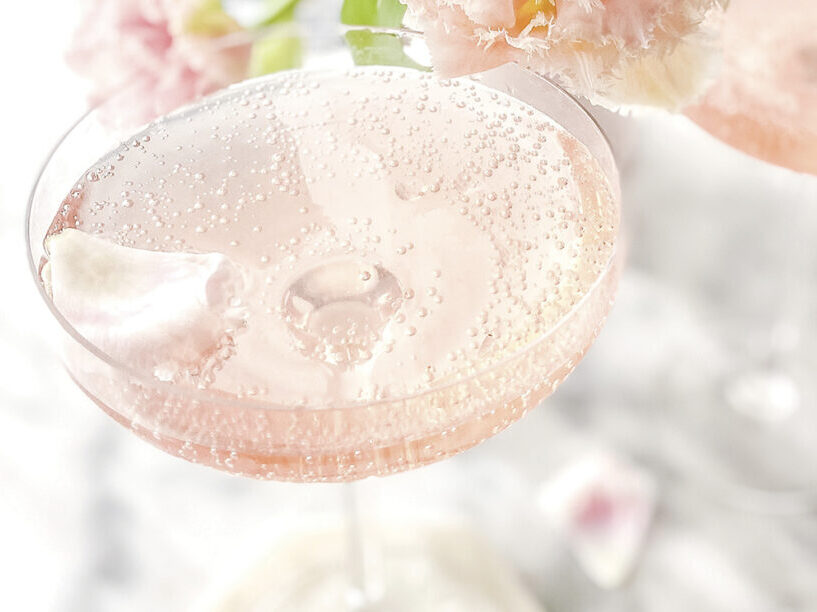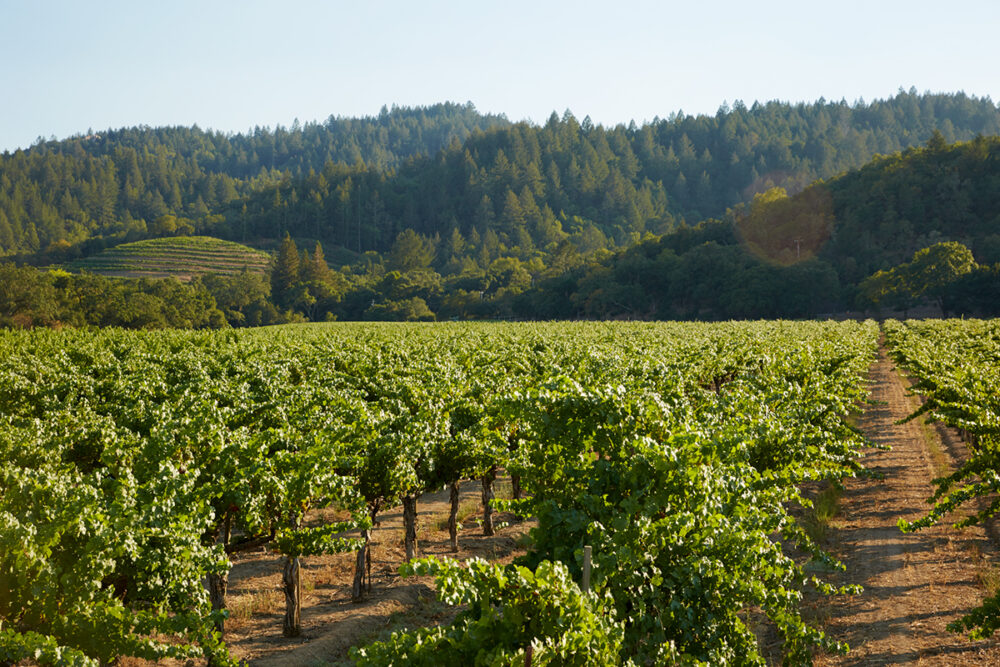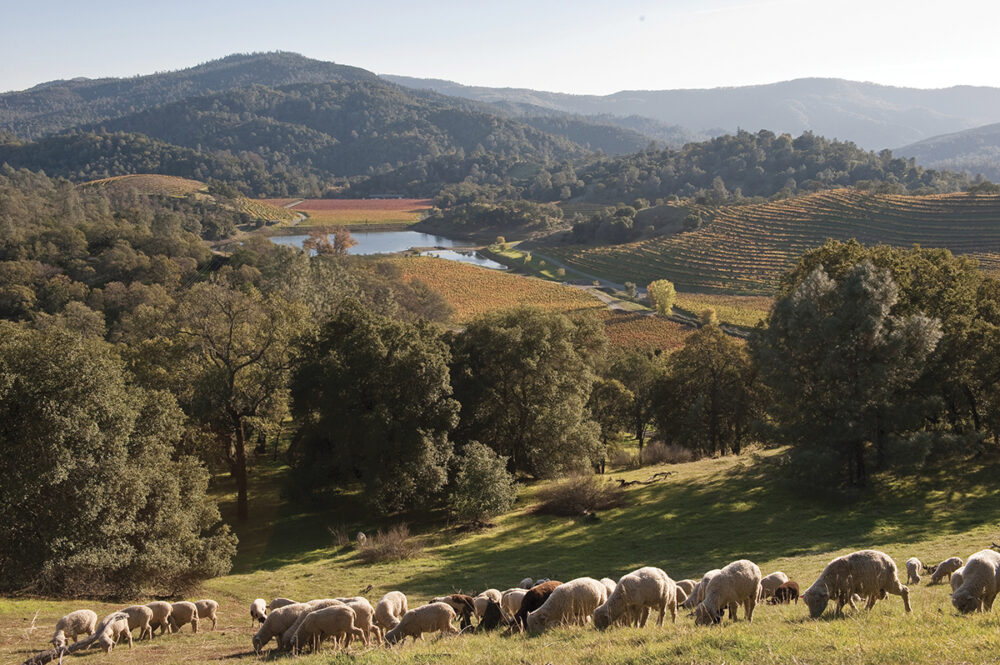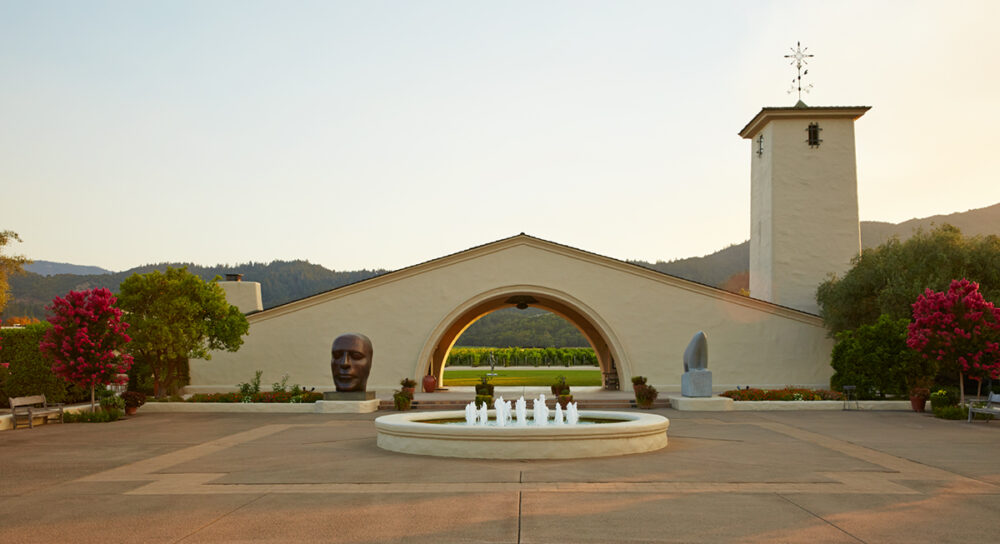In a region dominated by bold reds that fetch high prices, seeking out rosé-style wines can be a welcome diversion. They are more affordable than their red counterparts for practical reasons, such as rosé winemaking being less labor intensive with a much shorter aging duration before release. They can also be enjoyed in their immediate youth. Napa Valley rosé is unique, limited, and often unpredictably fun. While the traditional style of Napa Valley rosé is made from Los Carneros Pinot Noir, a classic grape from a classic region for this style of wine, many producers craft rosé from other grape varieties.
For many Napa Valley estates, making rosé brings with it room for creativity and the opportunity to offer guests something completely distinguishable. “We wanted to make rosé out of an interesting, less commonly found varietal in our region, and decided to try it out with Primitivo since we had never seen or tasted a Primitivo rosé before,” said Remi Barrett, Director of Sales and Marketing at La Sirena Wines. “It was so delicious that it was a no-brainer to keep it going! It’s juicy, balanced, and has a beautiful color,” she said.
At Hess Persson Estates, their rosé is made from Petite Sirah. And Brendel Wines makes an Italian-style Frizzante Rosé of none other than Grignolino grapes—a grape so rare it doesn’t even account for a standalone varietal in the annual California Grape Acreage Report. At 601 Cellars, a Spanish and Italian varietal-focused estate, they favor Grenache for their rosé—a particularly beautiful variety for pink wine—and they grow it old-world style. Priest Ranch uses Syrah, and Robert Mondavi hopped on board in the 2021 vintage with a sparkling rosé made primarily from Muscat. The vast range of grape varieties used for crafting rosé across the Valley is incredible and exceptionally fun to taste.
HOW RARE?
Looking at La Sirena’s Rosato, made from Primitivo and named in homage to this juicy Italian grape, it’s easy to see just how rare non-Pinot Noir rosé is. According to the 2021 Summary from the California Grape Acreage Report, there was a mere 1,348 bearing acres of Pimitivo vines across the entire state of California. Compare that to bearing acres of Cabernet Sauvignon across the state at 91,939, and Primitivo accounts for 1.4% of that total—this makes Primitivo from California rare and a rosé of Primitivo almost unheard of. And that’s an excellent reason to reach for varietals like this for rosé production. Finding a limited-production varietal that has the ability to craft a quality-driven expression of rosé brings with it a kind of exclusive fandom that can’t be earned in any other capacity.
CULINARY PAIRING
In addition to the benefit of offering a truly limited and distinct wine, rosé has clout when it comes to culinary pairing and is often a favorite of sommeliers; it showcases grapes purely, offers lower alcohol, and brings with it the kind of acidity that’s just right for a plethora of cuisine. “It really is a versatile wine that complements so many foods,” Barrett agreed. For Barrett, she prefers to enjoy her rosé with poke bowls, colorful vegetable salads with citrus-based dressing, and dim sum. “We’ve even had it with homemade pineapple fried rice, and it is just perfect,” she furthered.
YOUTHFUL DRINKABILITY
For many Napa Valley rosé producers, there is also the element of youthful drinkability that rosé offers that can’t be provided by their Cabernet Sauvignon and Bordeaux varietal-dominated collection. Rosé is quicker to the market and quicker to the glass because it does not require further bottle aging after purchase to be enjoyable. The instant gratification aspect is a nice complement to any Napa Valley estate’s collection, but especially one where the majority of the wines require long-term aging.
Rosé has always been a go-to style for those looking for youthful, fresh, and fruit-forward wines. They’re affordable and fun and offer pure drinking pleasure right out of the gates.
Rosé Ready to Enjoy
601 Cellars | 2022 Rosé of Grenache, $30
The new-release 2022 Rosé of Grenache from 601 Cellars comes from the renowned 5-acre McGah Family Heritage Vineyard in Rutherford. The vines are head trained and the wine is made in a traditional Provençal style: picked early, gentle press of whole clusters, and barrel fermented. It’s dry and full of minerality, with flavors of strawberry and plum.
Brendel Wines | 2020 Young Leon Frizzante Rosé, $38
The Brendel Young Leon is a fun and fruity sparkling made from organically farmed 100% Grignolino grapes and likely the only Napa sparkling made with this highly limited varietal. It’s juicy, full of watermelon and candied red fruit, but never sweet. It’s made in a light, fresh, and flavorful style.
Hess Persson Estates | 2021 Rosé, $40
The Hess 2021 Rosé is made from Petite Sirah grapes and shows off the beautiful potential that bold reds have for being crafted in this style. Fermented and aged in stainless steel, then aged for four months in neutral oak, this 2021 Rosé offers juicy watermelon and strawberry flavors with refreshing acidity and length. It’s light and bright and showcases the deep color that Petite Sirah grapes bring to any wine—it’s beautiful in the glass.
La Sirena | 2022 Rosato, $32
The new-release 2022 Rosato from Napa Valley’s La Sirena is made from Primitivo grapes grown in Amador County—a region that grows this variety, and other Italian grapes like Barbera, very well in their terroir. Light in color but full of aromas and flavor, the nose expresses a bouquet of strawberries, grapefruit, and white flowers. The palate shows off its dry style with refreshing notes of strawberry and cantaloupe, made lively by the mouthwatering acidity.
Priest Ranch | 2018 Brut Rosé, $60
This lovely Brut Rosé from Priest Ranch is made from 100% Syrah and was aged for two years in stainless steel on lees. Following bottling, it saw an additional two years of aging before release. Made in the traditional méthode Champenoise, it boasts flavors of ripe wild strawberry and Bing cherries. It has a voluptuous body balanced by bright acidity; it finishes long and smooth.
Robert Mondavi Winery | 2021 Sparkling Rosé, $35
The first-ever sparkling Rosé from Robert Mondavi is made from 76% Muscat, 13% Malbec, and 11% Pinot Noir. This beautiful blend brings forth aromas of cherry and watermelon, with notes of cherry, peach, and lime zest on the palate. It’s got a weighty, irresistible texture and fineness of bubbles. The Muscat comes from the Wappo Hill Vineyard in Stags Leap District, the Malbec from the estate To Kalon Vineyard, and the Pinot Noir from Stanly Ranch in Los Carneros.




